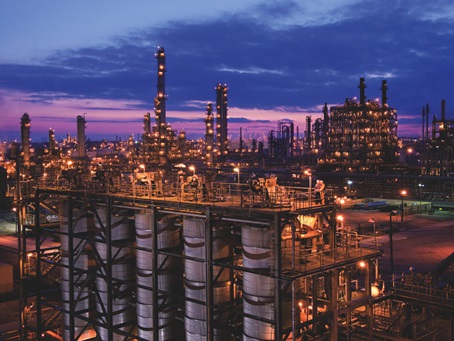
In its second-quarter earnings report, Exxon said that upstream (exploration and production) profits fell from $5.9 billion in the same period of last year to $2 billion this year, while downstream (refining and marketing) profits rose by $795 million to $1.5 billion. Stronger margins boosted downstream earnings by $1.1 billion, according to the company.
As the gap between upstream and downstream profits narrows, is it possible that Exxon will become more interested in refining as a way to replace reduced profits from crude production?
In early June, U.S. refineries were processing crude oils with an average API score of 31.95, the lightest average since 1991. Higher API numbers indicate lighter crudes. The 31.95 score translates to a density of roughly 864 kilograms per cubic meter. That is down by 3 kgs in 12 months and down by 10 kgs since 2008. As John Kemp at Reuters pointed out, that may not sound like much, but over the past 30 years the range of variation has been just 16 kgs.
ALSO READ: With Oil and Gas Down Huge This Year, 4 Quality Stocks to Buy Now
In the middle of the past decade, refineries were upgraded at billions of dollars in costs to refine what everyone thought would be heavier crudes from Latin America and Canada. Instead, the horizontal drilling and fracking revolution produced much lighter crude; so much, in fact, that refiners along the Gulf Coast have imported more heavier crudes from Mexico and Venezuela to create a mixture that is heavy enough to run in the upgraded refineries. Imports of light crudes from places like Nigeria, Angola and Algeria have essentially dried up.
Refiners and their profits depend on the price of crude. High crude prices squeeze profits while low crude prices boost them. Several years ago, once-integrated oil companies like ConocoPhillips, Marathon and Hess either spun off their downstream businesses (Conoco and Marathon) or sold off the refineries (Hess). Exxon and Chevron retained their refineries and downstream businesses to remain the last large integrated oil companies in the United States.
The last new complex refinery built in the country came on line in 1977, although many have had capacity and equipment upgrades since opening. In 2015, a simple refinery with a capacity of 14,000 barrels a day began operations in North Dakota, and Kinder Morgan began operations at a 42,000 barrel-a-day condensate processing facility. The Kinder Morgan plant cost about $370 million, or around 10% the cost of a new refinery.
Exxon’s upgrade at the Beaumont refinery adds just 20,000 barrels to the plant’s 345,000 barrel-per-day capacity, and the new capacity is meant for the light crudes that make it to the Gulf Coast from North and South Dakota and West Texas. Exxon is making a relatively small investment in a facility to produce high-margin refined products.
ALSO READ: Why the Exxon Dividend Is Safe After Poor Earnings
And Exxon is not creating a new business model here. It is merely picking up some low-hanging fruit.
Exxon’s shares traded down about 0.8% shortly before noon on Tuesday, at $77.44 in a 52-week range of $77.40 to $100.31. The low was posted earlier Tuesday.
Thank you for reading! Have some feedback for us?
Contact the 24/7 Wall St. editorial team.



